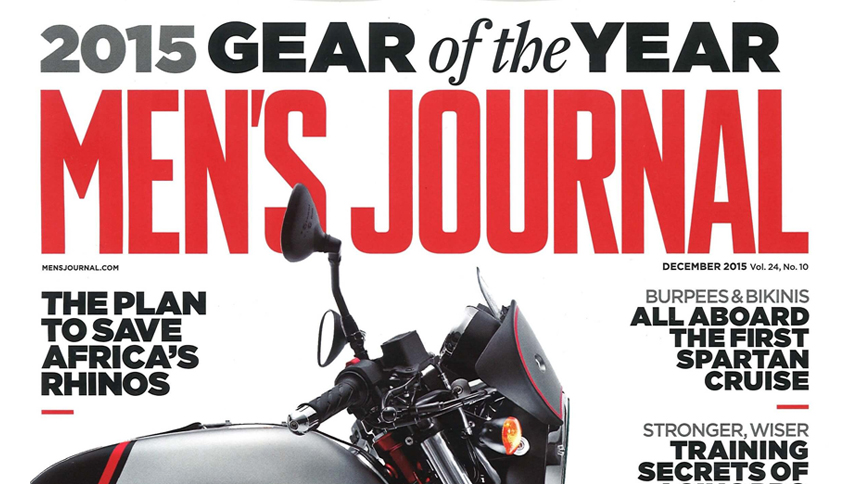If you’ve heard it once, you’ve heard it time and time again: to land your first byline in a magazine, pitch the FOB, or front of the book, first.
Editors at Destination Weddings & Honeymoons say it: “For features, we typically generate the ideas in house, then assign them out to well-traveled, proven freelancers who have written extensively for our FOB departments and know our brand well.” So, does Every Day With Rachael Ray (“Newbies should start by pitching___the front-of-book”), Wired (“Pitching the five-pronged front-of-book section is the best way to get your foot in the door”) GQ and just about every other big glossy out there.
Also on Mediabistro


But, what if you really, really, really want to write a feature? Well, nailing your first spot in the coveted “well” of a magazine involves more than simply pitching the idea. Your topic — and timing — have to be spot on, and you need to convince an editor that you’re the best writer for the assignment. But when living outside of the media hotbeds of New York and L.A. means no chance of rubbing elbows with gatekeepers at industry events, how do you know exactly what magazine editors want? Hint: You’ll need more than a killer lede or a glowing portfolio.
1. Include news and numbers.
Pitching a story about women and depression to a big pub like Glamour or Marie Claire is sure to get you a “we’ve already covered it” type of response (if one at all). But if you include information on a new study and use that as a jumping-off point, you’re more likely to catch an editor’s eye. They cover the same topics all the time — and are always on the hunt for a great reason to cover it again.
“Get an editor excited,” said Jon Finkel, a Florida-based sports writer, who notes that a good statistic or recent study could give an old topic a fresh angle.
Compelling numbers can also show a dramatic flair, which could push the editor to publish your piece sooner rather than later. Check Google to find out what types of stories are trending, and keep up-to-date through websites such as EurekAlert or PR Newswire. Regional publications are also a good place to look for a local story that’s worthy of national exposure. The story doesn’t necessarily have to focus on the latest development, but that timely angle can be what lands the assignment.
2. Add an anecdote.
Numbers are nice, but don’t forget your role as a storyteller. Ever notice how those exposes about an offbeat medical condition often open up with a story about a plain Jane who experienced it? That’s to draw the reader in and prove that the ailment could happen to anyone. Demonstrate in your pitch that you can connect with the audience through a personal story, and you’re that much closer to a yes from the editor. Plus, it also shows you’ve already done your homework to find the right source.
“You definitely want to make it look like you’ve made some outreach [with a prospective source],” said Oregon-based writer Teri Cettina, whose work has appeared in Parenting. She says she doesn’t always use an anecdote in a feature idea, but doing so can demonstrate that you’re committed to the idea and have invested time into the concept.
3. Package your pitch
From sidebars with handy tips to a pie chart breaking down statistics, packaging can really bring a story together — and help your query stand out.
“It would be a big mistake if you felt like [creating visual aids] was the job of the editor and you didn’t have to think about that,” said Cristina Goyanes, a writer who previously worked as an editor at Women’s Health.
Whether you include a fact box, infographic or list of resources, think about the questions you’d want answered and keep your packaging recommendations to a few sentences, Goyanes suggests. “They’re not going to want the whole story until they’re intrigued by the bait.”
When Finkel pitched an idea about exercises to Yahoo!, he got video from a personal trainer demonstrating the moves. That way, the feature wasn’t all about explaining how to perform the moves — it showed readers how to do them, too. Not to mention, it helped him land the assignment.
4. Nail the headline
For some editors, the art of writing a good headline may be enough to score an assignment, so make yours so juicy that they can’t resist.
“If you are still working on fleshing out what exactly the story is, but the headline is too good to pass up, it can save your butt,” Goyanes said.
What makes a good headline? Something that blends with the publication’s style, for one. If the magazine or website features lots of numbered lists, go with a “5 Ways to…” type of headline. Other strategies include creating an urgency to read the piece (i.e. “The Dangers of Missing Breakfast”) or going against what a reader may normally assume (i.e. “Is Sleeping Making You Fat?”)
Cettina said she includes a sample headline in a query, even though she admits writing it isn’t always her forte. But, even if your headline doesn’t make it to publication, simply making the effort can be enough to prove that you’re a thorough writer and willing to do more than is required.
5. Go beyond an idea
Writing your query in the tone of the actual story is a tactic that works for many writers, because, again, it allows the editor to see your writing style and imagine what the story will look like in his magazine.
Cettina says that writing the first few paragraphs of a pitch as if it were the actual story has helped her land some big bylines. We know what you’re thinking: “Why should I put all that time into writing a piece that may not get assigned?” Well, knowing when to invest in a piece comes with time, says Finkel, and is part of every writer’s balancing act.
If the first pub doesn’t like your pitch, tweak it and pitch it to another publication. As long as it hasn’t been published, you’re allowed to query elsewhere. (One caveat, however: don’t do simultaneous pitches for the same story. Instead, wait until you’re sure a magazine is passing on your idea before querying another.)
If you’re really against writing before getting the green light, focus on selling the amount of research you’ve done for the story instead and mention sources who are willing to be interviewed. Finkel says editors often like knowing that you’ve done some of that legwork in advance.
6. Sell yourself
A feature may have the juiciest lede and a stellar packaging concept, but an editor also wants to know why he or she should choose you to write the article.
Pitching an interview with a baseball player doesn’t necessarily distinguish you as a writer; however, if you played back-up catcher with him, that just may give you an advantage.
Sometimes it’s not just about making yourself stand out; it’s also about having a track record of successfully promoting your work, Finkel adds. “There’s so many places that people write for online, where the goal isn’t so much an awesome article but a ton of clicks,” he said.
You may want to mention your social media presence, because most publications nowadays are focused on spreading the word about their pieces. A writer with, say, thousands of industry followers on Twitter could certainly have an edge over another writer that simply offers to put the article together.
“You’re almost at this point… selling your writing and your reach and what the article’s reach is going to be,” said Finkel, adding that a story pitch also becomes a business pitch. “What editor wouldn’t want a writer who’s already thinking about how to promote the piece?”
Pitch Perfection
Every writer knows that the pitching game is all about timing — even the best queries are passed up for different reasons.
“Persistence can be just as important as having great ideas,” noted Cettina, who says she focused on a few magazines and pitched them “like it was my job” before she broke into the industry.
Before writing for many national magazines, Cettina said she knew that the more she pitched, the more her name would be in front of editors. Even when they didn’t like an idea, she began to receive responses and build relationships — a crucial key to landing future assignments.
“The first time an editor sees my name, they might be willing to dismiss me,” she said. “If they see my name routinely, regularly coming across their email, they may start to pay attention.”
Kristen Fischer copywriter and journalist living at the Jersey Shore. Visit www.kristenfischer.com to learn more about her.



.png)





